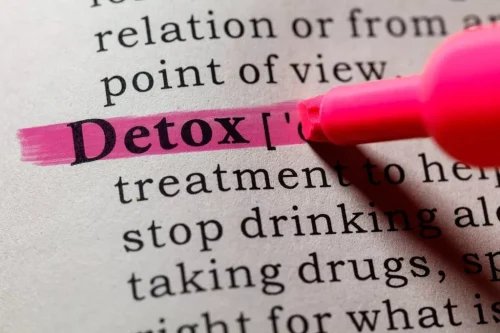Alcoholic neuropathy is a severe condition caused by excessive alcohol use. Damage to the nerves leads to unusual sensations in the limbs, reduced mobility, and loss of some bodily functions. Avoiding excessive amounts of alcohol is the primary way to prevent alcoholic neuropathy. If you notice you are developing signs of alcoholic neuropathy (such as numbness after drinking alcohol), in addition to seeing a physician, try to stay away from alcohol altogether.

Learn more about Peripheral Neuropathy
It is important to share any history of alcohol use with your doctor to get an accurate diagnosis. Your doctor will need to rule out other potential causes for your symptoms. Early diagnosis and treatment make it more likely that you will be able to recover. SFN may cause debilitating pain without proper management, often leading to deconditioning and depression. Cause-specific treatment, pain control, and lifestyle modification are key elements in the team approach to managing small fiber neuropathy.
What are risk factors for alcoholic neuropathy?
- If it affects two or more nerves in different areas, it’s called multiple mononeuropathy, and if it affects many nerves, it’s called polyneuropathy.
- Supplementation with benfotiamine significantly increased concentrations of TDP and total thiamine compared with supplementation with thiamine HCl [96].
It has previously been considered in relationship to nutritional, especially thiamine, deficiencies seen in alcoholics. Thiamine deficiency is closely related to chronic alcoholism and can induce neuropathy in alcoholic patients. Ethanol diminishes thiamine absorption in the intestine, reduces hepatic stores of thiamine and affects the phosphorylation of thiamine, which converts it to its active form [12]. In addition, patients with chronic alcoholism tend to consume smaller amounts of essential nutrients and vitamins and/or exhibit impaired gastrointestinal absorption of these nutrients secondary to the direct effects of alcohol. These relationships make chronic alcoholism a risk factor for thiamine deficiency.
What is Alcoholic Neuropathy?

Even the examination of relatives with symptoms suggestive of inherited neuropathy should be considered. Vitamin E is used to refer to a group of fat-soluble compounds that include both tocopherols and tocotrienols. Treatment with vitamin E was found to be beneficial in the treatment of patients with diabetic peripheral neuropathy [104] and neuropathic pain in streptozotocin-induced diabetic rats [105]. Recently findings from our laboratory also suggest the benefecial effects of both α-tocopherol and tocotrienol, isoforms of vitamin E, in the prevention of hyperalgesia and allodynia in rats administered ethanol for 10 weeks [55].
What causes alcoholic neuropathy?
Vigilant foot care and the use of shoes with an enlarged toe box are useful in preventing foot ulcers. Your health care provider will perform a physical exam and ask about symptoms. Autonomic nerves are concerned with muscular functions which are reflexive, such as breathing, heartbeats and peristalsis (rhythmic movements of the intestines).
- Valproate demonstrated varying effects in different studies of neuropathic pain, with three studies from one group reporting high efficacy [125–127] and others failing to find an effect [128, 129].
- There are also direct toxic effects of alcohol and its metabolites on neurons affecting cellular cytoskeletons and demyelination of neurons.
- When the sural nerve is not affected, a fascicular biopsy from a different nerve can be performed guided by nerve imaging (see next section).
- They can perform an evaluation, help determine the appropriate setting based on your unique needs, and provide referrals to rehabs.
How do doctors diagnose alcoholic neuropathy?
- The action of these abnormal proteins is explained by competition with normal proteins causing the damage to function and metabolism of the cell [22].
- The precise mechanisms responsible for toxicity on the peripheral nervous system, however, have not yet been clarified.
- In someone with alcohol use disorder who may consistently consume large amounts of alcohol, the chronic effect of alcohol on nerves can lead to permanent damage.
- The majority of studies which investigate the relationship between malnutrition and neuropathy focus on thiamine deficiency as an aetiological factor, drawing upon existing knowledge of Beri Beri.
- However, more severe cases may be intractable, even with abstinence, and lead to lifelong impairment.
EMG and nerve conduction studies are also helpful in this differentiation, as these studies will be normal with small fiber involvement and abnormal with large fiber involvement. EMG may also differentiate from lumbar radiculopathy, which may also present with lower extremity burning and numbness. Differentiation between these conditions is imperative for implementing a proper treatment regimen, as management of these conditions varies. Sensorimotor polyneuropathy is a condition alcohol neuropathy that causes a decreased ability to move and feel (sensation) because of nerve damage. Neuropathy is a common complication of cancer, whether due to the location of your tumor or the treatment, such as chemotherapy, that you’ve undergone. On the Livestrong Foundation website you can find essential info on the cancer-related triggers and treatments for nerve damage, the best questions to ask your doctor about neuropathy, and resources for finding a neuropathy support group.
Licenced & Certified by the State Department of Health Care Services
Alcoholic neuropathy, also called alcohol-induced peripheral neuropathy, is nerve damage in the body caused by the toxic effects of alcohol. A doctor may diagnose a person with alcoholic neuropathy, if alcohol use has damaged the peripheral nerves. People who drink heavily on a regular basis are at risk of developing this condition. The diagnosis of alcoholic neuropathy involves a combination of medical history, physical examination, and possibly blood tests or nerve tests such as electromyography (EMG) and nerve conduction studies (NCV). In people with alcoholic neuropathy, the peripheral nerves have been damaged by too much alcohol use.
- The most effective strategy to prevent further neurologic deterioration is for the patient to reduce or discontinue alcohol abuse.
- Genetic testing should be considered when clinical history or examination suggests a hereditary origin of the peripheral neuropathy (i.e., clinical pattern #2, #4, occasionally #5).
- Differentiation between these conditions is imperative for implementing a proper treatment regimen, as management of these conditions varies.
- You’ve come to the right place if you need help finding a support group for neuropathy.
These five subtypes should neither be taken as exclusive nor absolute since overlap of these patterns is not uncommon. For instance, some patients with a hereditary neuropathy (i.e., ATTRv amyloidosis) present with a rapidly progressive disease course, and are often misdiagnosed as CIDP. On the other hand, also CIDP patients occasionally present with a slowly progressive disease course.
